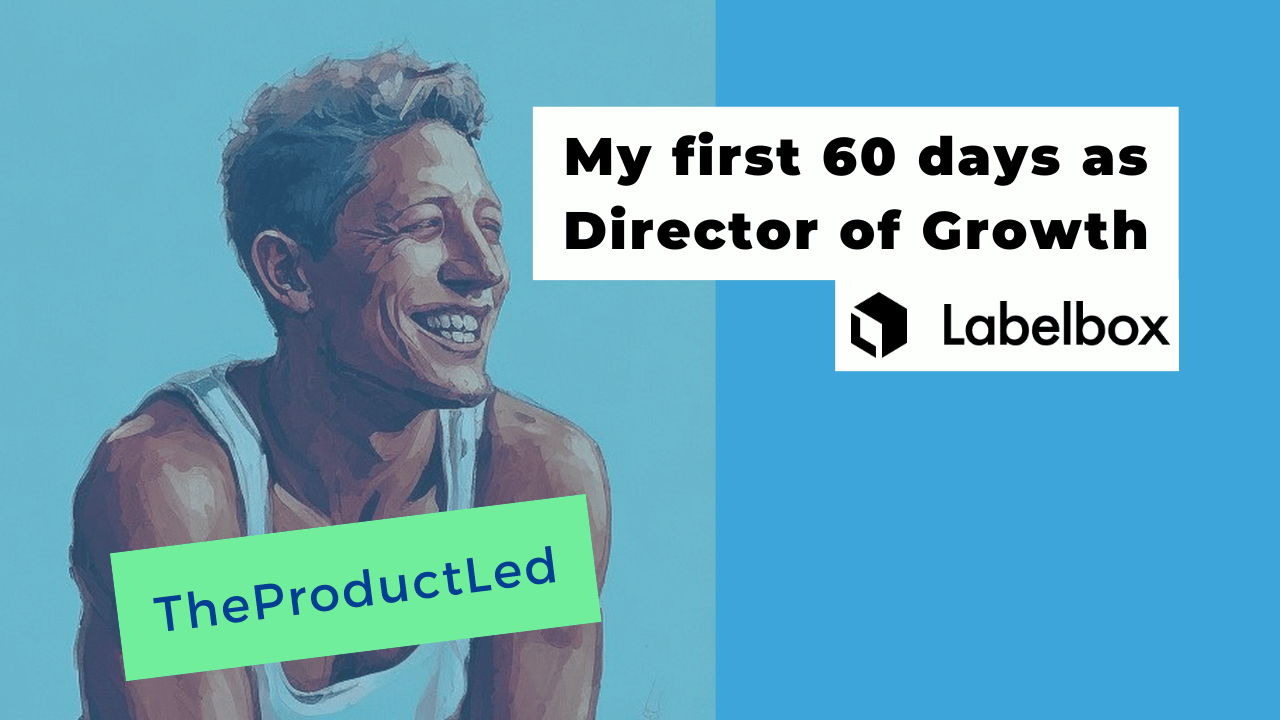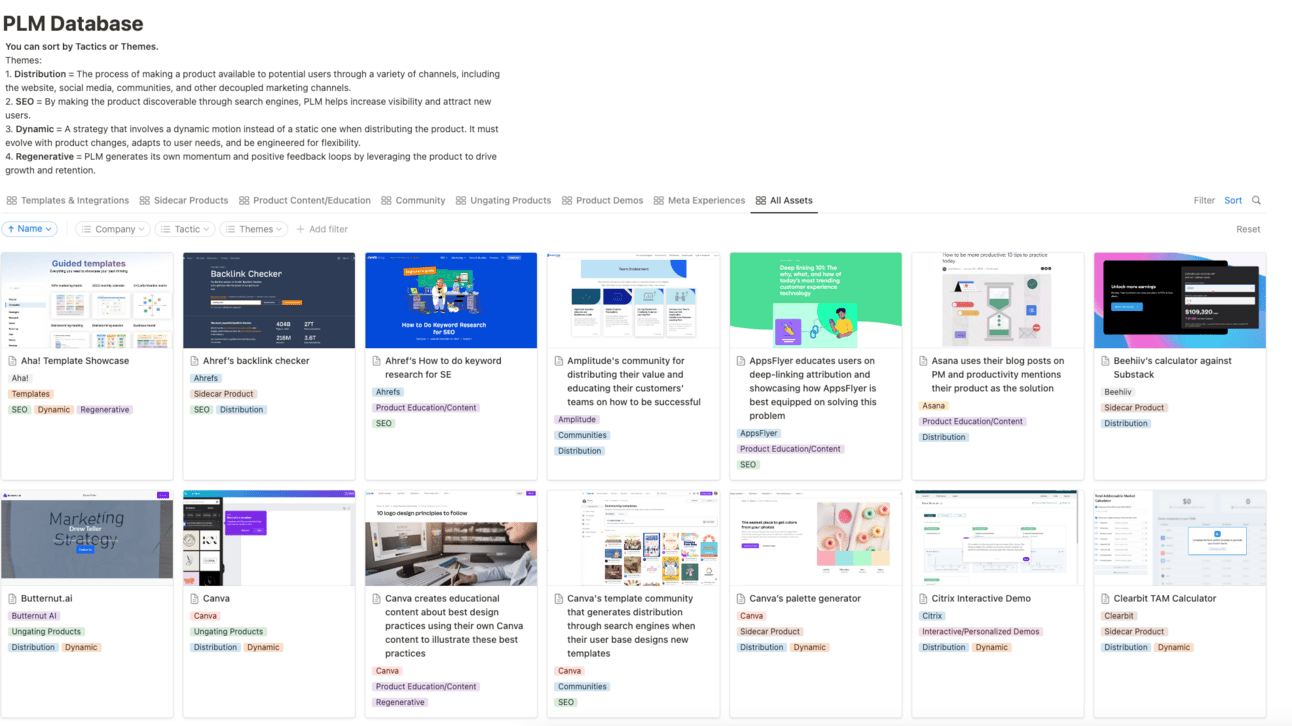Hey everyone! I can’t belive it’s already September. This monthly longform writing style works really well for me.
For this month’s TheProductLed edition, I am excited to share 🥳
Deep dive into my first 60 days at Labelbox as Director of Growth 📈
Share the PLG Recap MVPs from last month 🥇
Let’s get into it!!
I am almost 60 days into my new role at Labelbox - the Data-centric AI platform for building intelligent applications. To be specific, it’s been actually 54 days or 1,296 hours or 77,760 minutes - but who’s counting?
Wow, it’s been absolutely incredible. Not lying. I haven’t had this much energy in my career in a long time. It’s been a whirlwind of discoveries, learnings, and most of all, a profound understanding of the driving forces behind one of the leading AI data-centric platforms.
Before I started, I spent a couple of weeks reading, prepping, studying and just getting all my frameworks, Notions, and Miros in order.
After I started working…what Miro? lol.
It’s true. Once I got into the inner workings of the business, so much of my brain storage was filled with recency bias.
The first 60 days in a high-stakes position at an innovative company like Labelbox felt like stepping into a new world. A vast realm with its unique rhythms, nuances, and processes. Going into the job, I knew I would have to learn the teams, the organizational structure, the business model, and how the vision is being executed. There were two things I focused on:
Understanding the Pulse of Labelbox: One of the first and most fundamental tasks was to meet the team and understand the dynamic individuals driving the company. I met with the leadership team - the visionaries and decision-makers. Meeting them provided rich insights into the company's culture, core values, and aspirations. During these initial meetings, I asked them:
What keeps them up at night
Where they want to take the business in the next year
What they were most excited about hiring a head of growth (me)
Observing and Understanding Processes: Just as important was the understanding of how things get done. I constantly observed how information flows. What's the rhythm of teamwork and collaboration? Observing these processes was like watching the heartbeat on a monitor – every pulse giving vital clues about the health and vitality of its operations.
Decoding the Speed of Communication
An intriguing pattern emerged during these observations. It was apparent that information flowed at varying speeds:
Slow: Often through formal channels like email or deliberate, scheduled discussions that might take days.
Medium: Regular meetings or check-ins where the team gets updated.
Fast: The rapid-fire exchange of Slack messages or quick, informal huddles.
Alongside the speed, the nature of reactions to this information was either:
Reactive: Actions taken post an event or trigger.
Proactive: Anticipating needs and acting in advance.
Neutral: Maintaining the status quo, neither proactive nor reactive.
It was fascinating to see how at times, vital information moved slowly and was met with a neutral reaction (which is normal at every org - hence the need for hiring that helps solve these gaps). Recognizing these patterns felt like stumbling upon dormant communication treasure troves waiting to be activated. In growth, communication speed and proactivity are imperative.
Activating Dormant Channels for Growth
Growth in a data-centric, AI-driven environment relies heavily on rapid communication and the relentless elimination of bottlenecks. By identifying the areas with a low rate of information coupled with neutral actions, I discovered our first significant opportunity. Activating these communication styles and channels could propel us to faster decision-making, seamless collaboration, and thus, accelerated growth.
With this in mind, I knew I had to start putting strategies, plans, and tactics together. But with limited knowledge of the business, culture, and data - I have to act with some level of confidence.
Shipping Impactful Projects with a Fresh Approach
After understanding the dynamics, the next step was to figure out how to start making a tangible impact. Here’s the simple, three-pronged framework I created:
Quickest to Ship: What can we get out the door the fastest? Time is of the essence (as always), and identifying projects that can be rolled out swiftly is crucial.
Valuable Impact on Business: Of these quick-to-ship projects, which ones would move the needle? Which would drive substantial value to our customers.
Training New Team Muscles: The process should be more than just shipping projects; it should also foster stronger collaboration, promoting a unified, efficient team ready to face the challenges of the ever-evolving AI landscape.
The Actions I Took
Early Trust Building: There is a lifecycle adoption to every new hire, including me. My framework for holding this lens looks like this:
Saying words speak louder than saying no words
Actions speak louder than words
Outcomes speak louder than actions
Impact speaks louder than outcomes
Therefore, with this in mind, I can’t skip to the finish line. I have to optimize for each part of the funnel, converting to the next. On my second week, I headed to San Francisco for the all-hands company offsite where I supported our leadership team in defining what the growth levers and go-to-market motions are in the world of PLG (post here). I did this knowing that my first mission was finding alignment, buy-in, and trust in the way I think. ✅
Secondly, is actions. You will see by reading below that I am working towards this next step. Come find me in a few months on whether I am succeeding at driving impact 😉!
Growth Model & Data Integrity: Started with the basics of B2B PLG data. I looked for metrics in the traditional funnel: traffic, signups, signup rate, usage, and revenue. I looked into our Looker charts, dashboards, and the entire SFDC suite of revenue data. I quickly realized that we needed to level up our data infrastructure to start reporting on Acquisition, Activation, Retention, and Conversion. This is the first win/focus I went after - to map our growth metrics and to make a preliminary growth model in Google Sheets.
Growth Squad: I launched the formation of a new crossfunctional team across Product, Marketing, Eng, Sales and Data. The purpose of this team will be to drive alignment across the org on all the projects that impact growth metrics. For this quarter, the expectation is to just get used to a new meeting and to identify growth values.
Acquisition & Performance Marketing: My background is in performance marketing. I spent years running Google Search and paid ads and have managed $10M in annual spending in B2B SaaS. This was the quickest place I had the chance to improve. I relaunched the paid ads strategy as soon as possible. I tried to do this at all costs I knew once I could get this up and running, I could focus on the product.
This consisted of setting up our offline conversion tracking with SFDC and Google Ads
Ensure we could accurately map self-serve conversions and SFDC opportunities back to Google
Ensuring that we were passing
gclidandutmparameters from the Web → Segment → MKTO → SFDC all the way through the user’s lifecycle.Paid Search is 100% algo-based. Passing the most accurate conversion data is 1000% imperative to scaling this channel.
Shipping Something: We prioritized two really quick tactics that would be Growth’s first wins. One tactic was an email tactic focused on free-to-paid conversion. The second tactic was focused on improving telemetry and tracking on our marketing site. We weren’t capturing attribution parameters in completeness, so I worked with Web Eng to ship a fast solution. This greatly allows us to now measure the impact of our channels more effectively.
Strategy & Vision: I mapped out the Goals, Strategies, and Tactics for H2 2023. I used the current data we had made assumptions and set the expectations for what we can do. My goal is to complete 60% of the Growth Strategy since my strategy is a moonshot with aggressive outcomes. The reason why I set these this way is because I need to learn what we can do, how we operate, and how we tackle problems in a fast-moving org. I am stoked!
PLG Recap Highlights for August 🎉
💡 Click on the ones you like and bookmark them on LinkedIn! 💡
Acquisition
Elena Verna - The three distinct tracks for B2B PLG Acquisition
Natalie Marcotullio - 6 ways on how I fix leaky website conversions
Activation
Theo Ohene - 7 ways to get your new users to activate faster
General Growth:
Maxim Poulsen - Steal my Product-Led Growth cheat sheet
Kyle Poyar - Who owns which growth KPIs
Ido Wiesenberg - 22 Growth Strategies from Founders & Leaders of PLG Companies
If you missed the PLM Guide on how to create successful tactics and drive a strong PLM strategy, here it is:
Thanks for taking the time to stop by today!
Was this forwarded to you? Subscribe with one click.
If you're finding this newsletter valuable, please share and spread the word if you can!
See you next time 👋



